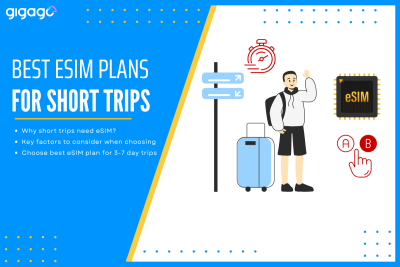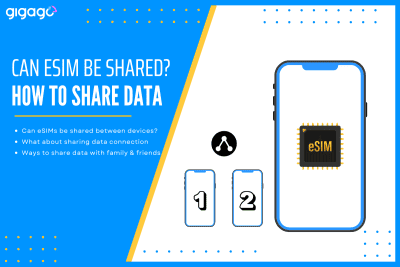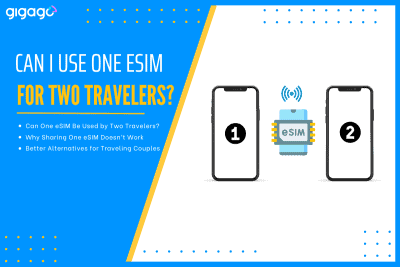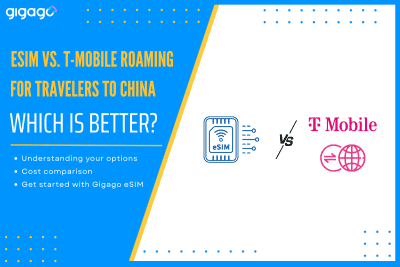Traveling for a short trip, typically for 3- to 7-days, drastically changes the rules of connectivity. The traditional solutions like expensive carrier roaming or time-consuming local SIM buying are simply impractical when time time is precious. This is where eSIMs take the picture. The eSIM (embedded because it is a digital solution that solves the […]
What Is iSIM (Integrated SIM)? Key Differences Between iSIM, eSIM and SIM card
Learn about the iSIM revolution, including what is iSIM, key features, benefits, differences between iSIM and eSIM, which is more secure, and more.
iSIM is considered as the next revolution in the SIM world. Indeed, the SIM card is witnessing the next wave of transformation with the eSIM, followed by iSIM or the Integrated SIM, which are much smaller than the physical SIM cards or eSIMs (embedded SIMs). Two big telecommunication companies, Vodafone and Qualcomm, showcased a proof of concept working with an integrated SIM and proved how an iSIM can be associated with smartphones and help users worldwide.
In this article, you will learn about iSIM, from what it is, how it works, how beneficial it is, and what differentiates it from eSIM, etc.

In this article
I. What Is iSIM? Key Features
iSIM (integrated SIM) is the next step in the evolution of SIM technology where cellular connectivity and subscriber identity management functionality are integrated into a System-on-Chip (SoC).
An iSIM is minuscule in terms of size, which is less than 1m2 in surface area. It is considered as the most advanced, efficient and flexible device-side equipment.
iSIMs are primarily used in smaller IoT devices with size constraints such as smartwatches, but they can also be used in smartphones.

II. How Does An iSIM Work?
An iSIM works by storing your cellular subscription information, such as your network settings, phone number, and account information, on the chip. This information is securely encrypted and protected by the operating system of the device.
An iSIM works similarly to SIM card or eSIM, but does not need to be inserted or embedded into a mobile device. Instead, it has a space on the System of Chip (SoC), where it is protected by a Tamper Resistant Element (TRE).
When you activate an iSIM, your phone will automatically connect to the supported network and authenticate your subscription. Then, you will be able to make phone calls, send text messages, and use data.
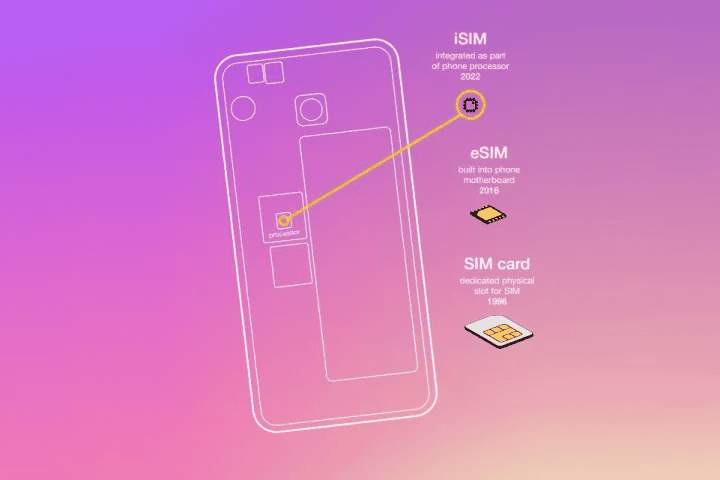
III. Benefits Of An iSIM
As the most advanced version of SIM card so far, an iSIM has the benefits as follows:
- Smaller size: iSIMs are much smaller than traditional SIM cards, which free up space for other components or making devices more compact.
- Enhanced security: iSIMs are embedded within a secure element on the device’s processor, thereby providing a higher level of security against hacking or data breaches.
- Lower power consumption: iSIMs draw the power directly from the device’s processor, thereby reducing the power consumption of the device.
- Compatibility with all networks: iSIMs support all major cellular networks, from 2G, 3G, 4G to even 5G, allowing you to switch carriers without having to change your SIM card physically.
- Remote managing: iSIMs can be activated and configured from a distance, eradicating the need to visit a store
- Ideal for IoT devices: The small size and lower power consumption of an iSIM make it ideal for use in battery-powered IoT devices, like fitness trackers, smartwatches, microprocessors and medical equipment.
IV. What Is The Difference Between iSIM, eSIM and SIM Card?
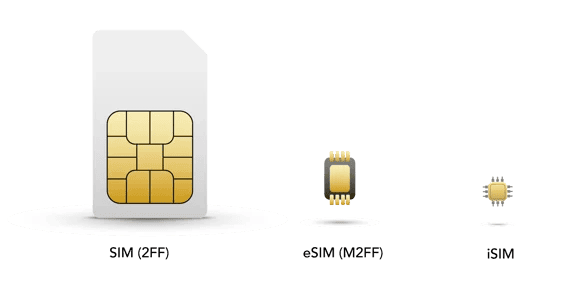
The most obvious difference between iSIM, eSIM and SIM card is size. Additionally, eSIM and iSIM always cost more than traditional SIM cards because they are newer and more advanced, making them more expensive to produce and develop. However, this extra cost can save you money in the long run because you can change your network carrier or plan without having to physically replace the SIM card.
Other differences between iSIM, eSIM and SIM cards will be explained in the following table:
| Feature | iSIM | eSIM | Physical SIM card |
| Form factor | Embedded in device’s processor | Embedded in device’s circuit board | Separate removable card |
| Size | Smallest | Smaller than physical SIM | Largest |
| Security | Highest | High | Lower |
| Price | Most expensive | More expensive than physical SIM cards | Cheapest |
| Convenience | Most convenient | More convenient than physical SIM | Least convenient |
| Activation | Remotely activated | Remotely activated or via QR code | Requires physical insertion |
| Compatibility | All major cellular networks | Most major cellular networks | All cellular networks |
| Ideal for | IoT devices, smartphones, laptops | Smartphones, tablets, smartwatches | Older phones, basic phones |
V. Impacts of iSIM on IoT Devices
iSIM can have a major impact on the way we use IoT devices. Here are some potential impacts of this new technology:
- Global connectivity: With an eSIM, you can use your IoT device no matter where you are in the world. It also helps you stay connected to the internet securely.
- Simplified manufacturing: iSIM is embedded directly into the hardware of the device, which simplifies the manufacturing process. This makes IoT devices cheaper and available more widely.
VI. How Does System on a Chip (SOC) Work?
To understand iSIM, you need to have a better view of what it means to integrate with the device SOC.
SOC stands for System on a Chip. It is a single chip containing all of the essential components of a computer system, including the processor, memory, and input/output ports.
How does SOC relate to iSIM?
iSIM is a type of SIM embedded directly into SOC, so the iSIM and the SOC are on the same chip.
By integrating the SIM directly into the SOC, it will help reduce cost, power consumption and size. As a result, IoT devices with this technology will be cheaper, more power-efficient, and smaller.
VII. FAQs
Is iSIM better than eSIM
Yes, iSIM is better than eSIMs. First, iSIMs are smaller than eSIMs, making it ideal for use in smaller IoT devices. Besides, iSIMs are cheaper to manufacture than eSIMs. It is also easier to use an iSIM than an eSIM because it are embedded directly into the device’s hardware.
What are some examples of IoT devices that use iSIM?
Some devices that use iSIM are:
– Smartwatches
– Fitness trackers
– Medical devices
– Industrial sensors
– Asset trackers
– Smart home devices
– Smartphones
Are iSIMs more secure than eSIM?
Yes, iSIMs are more secure than eSIMs because they are embedded directly into the device’s hardware. This makes them more difficult to remove or tamper with. Additionally, iSIMs use a stronger encryption algorithm than eSIMs.
